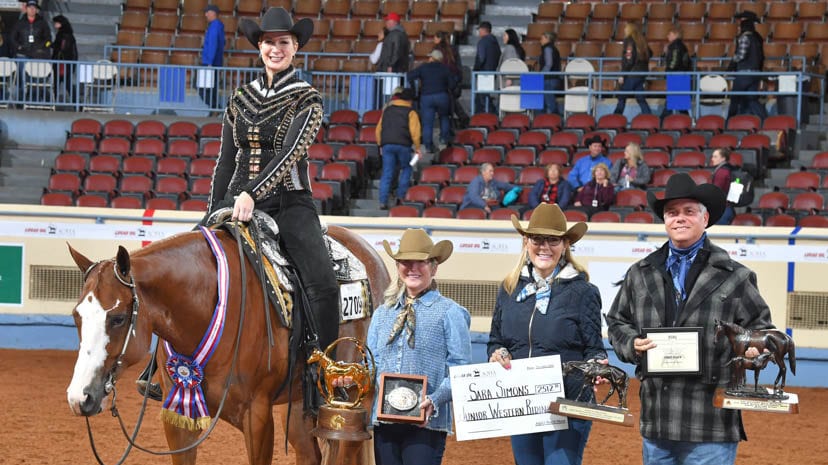Western riding is a class that takes a highly-skilled, balanced horse. The intricate patterns include a log, back-up, transitions, and lead changes.
There’s a lot of room for error in the pattern, and having a horse that guarantees you “pluses” on your scorecard will lead you to success in the show ring.
Jason Martin, of Highpoint Performance Horses, and Sara Simons, of Simons Show Horses, discuss what they look for when searching for their next great western riding partner.
Pace is Key
Western riding requires a horse to stride out, and being able to do that is the first thing Martin looks for.
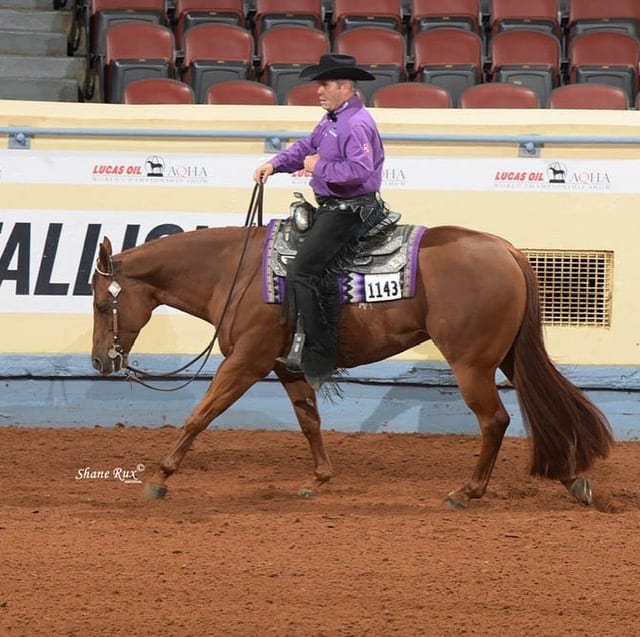 “It’s super important that when you look for a western rider, that you move them up to a western riding pace to make sure that their strides get longer and slower,” Martin said. “Sometimes, you think that a horse is going to be a great western rider, and then when you move them up to the next pace, they get quick and don’t look pretty. You also can have horses that aren’t great movers, but when you move them up to the western riding pace, they become great movers.”
“It’s super important that when you look for a western rider, that you move them up to a western riding pace to make sure that their strides get longer and slower,” Martin said. “Sometimes, you think that a horse is going to be a great western rider, and then when you move them up to the next pace, they get quick and don’t look pretty. You also can have horses that aren’t great movers, but when you move them up to the western riding pace, they become great movers.”
Making sure they have this pace makes it easier to execute flawless lead changes in the show pen.
“I think it’s a little bit easier to get more front leg out of them when they change leads,” Simons said. “I would say not as tight-strided of a horse is something I look for.”
Straight Lines Lead to a Perfect Pattern
Another factor that allows for flawless lead changes is the ability to pull off straight lines.
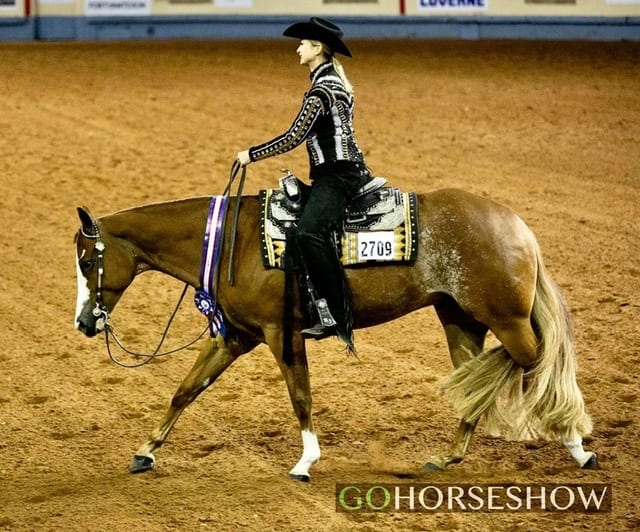 “The straighter the horse goes, the easier it seems to be to do the lead change,” Simons said. “Going down the line, the farther off the cones you get, the harder it becomes. Straightness is critical, and it’s also imperative on your crossovers. I find when I judge, it’s a lot easier to reward those horses that come across there and stay very straight and don’t take a diagonal line. I think straightness is probably the most important thing for me.”
“The straighter the horse goes, the easier it seems to be to do the lead change,” Simons said. “Going down the line, the farther off the cones you get, the harder it becomes. Straightness is critical, and it’s also imperative on your crossovers. I find when I judge, it’s a lot easier to reward those horses that come across there and stay very straight and don’t take a diagonal line. I think straightness is probably the most important thing for me.”
Not All About the Lead Changes
Even though people tend to focus on the lead changes in the western riding pattern, making sure your other skills are perfected can boost your score. Using the scorecard to your advantage is vital.
“Four of the points have nothing to do with western riding. It has to do with your transitions, your log, and your stop and back up,” Martin said. “So, it’s important that you know the scoring system, and that you give the judge the best ride you can, compared to the scoring system.”
Even if a horse doesn’t have the prettiest lead changes, they can still succeed in a western riding class.
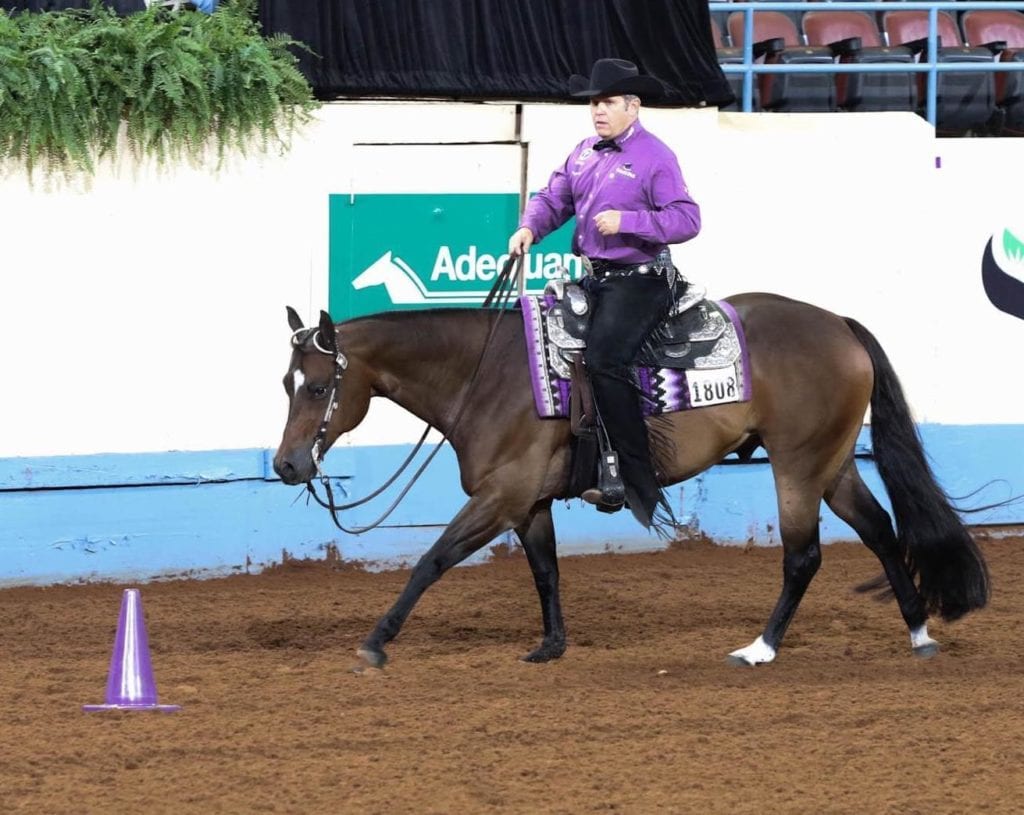 “You can have a zero lead changer, an average horse that’s never going to lead change plus and always zero,” Martin said, “but if you learn how to plus your log, your stop and back, your lope-off transition, and your jog log, now your score is up to 72. You can use the scoring system to your advantage.”
“You can have a zero lead changer, an average horse that’s never going to lead change plus and always zero,” Martin said, “but if you learn how to plus your log, your stop and back, your lope-off transition, and your jog log, now your score is up to 72. You can use the scoring system to your advantage.”
Good and Willing Learner
The list of skills a horse must learn to even compete in western riding is lengthy. It’s a challenging class to master, and just like anything else, it takes practice and hard work.
“The horse has to be pretty willing to learn because, in my opinion, this is one of the hardest classes to teach it,” Simons said. “It requires a pretty huge skill set to be able to do those 7 or 8 lead changes so effortlessly.”
The less you have to fight a horse to teach them the skills, the prettier your pattern will be.
“It has to be a horse that wants to learn,” Simons said. “Because those that don’t have self-carriage that they need, just take a lot longer, and they’re a little more man-made, and it makes it a lot harder.”
Happy Horse Makes for a Prettier Pattern
One of the worst things is seeing a horse execute a pattern with their ears pinned back, and it’s often something a rider can’t control. Finding a horse that enjoys working can make a difference in appearance.
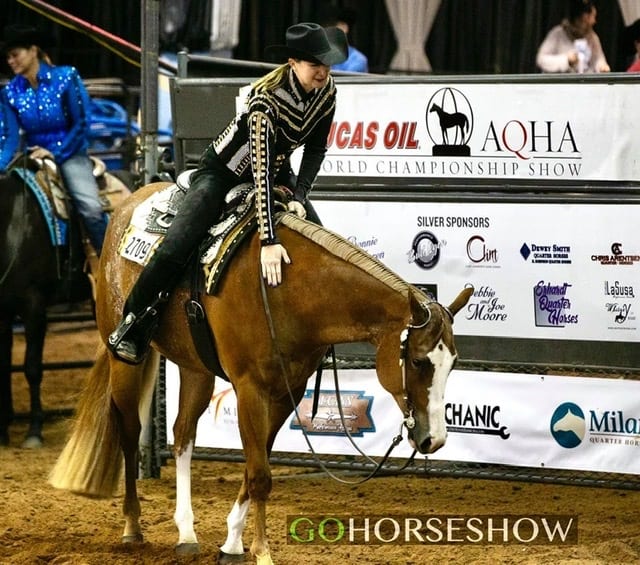 “I think the right horse possesses it [expression] naturally, so it would be a horse that appears to be happy when it’s doing its job,” Simons said. “Something that’s willingly-guided too. If you have to fight them to do these things that we need to do, then the expression is going to be compromised for sure.”
“I think the right horse possesses it [expression] naturally, so it would be a horse that appears to be happy when it’s doing its job,” Simons said. “Something that’s willingly-guided too. If you have to fight them to do these things that we need to do, then the expression is going to be compromised for sure.”
Fighting your horse in the show pen can be detrimental to your score, so being sure that you and your partner work together happily is necessary.
“You want it to look like the rider isn’t doing anything,” Martin said. “You make it look as effortless as possible. You don’t want to override it; you want it to look like the horse is doing it on its own.”
Western riding is a class that requires a lot — skills, focus, connection. Find a horse that has these things, and you’ve got yourself a champion.
CLICK HERE to learn more about western riding through Jason Martin and Charlie Cole’s video training series, available for rent or purchase.


